#Lola Rodríguez de Tió
Explore tagged Tumblr posts
Text
Por Berta Joubert-Ceci
Por Berta Joubert-Ceci
Seguramente muchos y muchas de ustedes han oído “Cuba y Puerto Rico son de un pájaro las dos alas”, pero no siempre se sabe su origen y su significado tan profundo. Pues es del poema de Lola, “A Cuba” y la estrofa que le sigue dice “reciben flores o balas sobre el mismo corazón”.
#lola rodriguez de tio#puerto rico#cuba#colonialismo#solidaridad#berta joubert ceci#struggle la lucha
5 notes
·
View notes
Text
My (Exhaustive) Thoughts on the 2021 West Side Story Adaptation - 1/3
Well, it’s finally here! I saw the movie opening weekend, and it’s taken me weeks to get the words out right. To sum up my reaction: I loved this movie. Loved, loved, loved this movie!
From the way it was shot (the camera moves with the action) to the way it looks (the gorgeous puddle shot is seared into my brain) to the way it sounds, I love it to pieces—pieces I want to share with you.
So if you saw the film or haven’t seen it, here is part one of my thoughts (part review, part analysis) on the new West Side Story adaptation of the classic 1957 stage musical.

[SPOILERS AHEAD]
The movie begins with a derelict, half torn-down condemned city street, cluing in the audience that this will be the story of a doomed neighborhood. A sign informs us that the neighborhood is condemned to demolition. We swing past a wrecking ball as the music reaches a crescendo—then the ground opens up, revealing a boy in a cellar. He tosses up buckets of paint to his friends, a group of rag-tag boys that could give the Outsiders a run for their money. (If I’m going to be honest, I can’t tell the Jets apart. They’re all pale brunets in ragged denim. I think I can pick out Baby John and Diesel by the end, but that’s it.)
It’s unclear what they’re up to, but if the “Men At Work” sign they kick over is any indication, it’s business. More young men join in. Soon, the entire Jet gang is striding to a mural of the Puerto Rican flag. Anybodys runs up like he’s the one who reported it, but the gang brushes right past him.
They begin to vandalize the mural before the Sharks, acting as a local vigilante group, arrives. A chase sequence ensues that is at times comical (combat via falling watermelons) and brutal (the poor Shark who takes a paint can to the head and is bloody for the rest of the scene).
When police lieutenant Schrank and the officers break up the fight, Bernardo starts to leave quietly, but when he notices that his neighbors are watching, he sings “La Borinqueña” (with the original lyrics by Lola Rodríguez de Tió), and the rest of the Sharks join him as the neighbors applaud. They walk off like heroes.
No one would call Jets heroes but the Jets.

Historical Context
From the very beginning, this movie has a specific time and place: San Juan Hill on the eve of its demolition.
The gangs are two houses alike in personal dignity, but not in the way they are treated…or in the way they treat others. The Jets largely seem to consist of boys who grew up on the streets of Manhattan and did not have idyllic childhoods. The only family most appear to have is each other.
This film chooses to highlight the alienation the Jets feel (as second and third-generation immigrants) by highlighting class. Schrank attributes their poverty to their lack of ambition and their parents’ personal follies. They are, as he puts it “the last of the can’t-make-it-Caucasians.” To put it simply, he believes that poverty (for white Americans) is a choice…a racist bootstrap theory.
Compare this to the way Schrank and the Jets view the Puerto Rican community. The Puerto Rican characters we meet follow the traditional immigrant narrative: hard-working families deeply connected to their homeland’s culture...who face xenophobia and racism from “more American” Americans. In general, the Sharks seem older (or at least more mature) than the Jets. Most clearly have jobs (some are still wearing their work aprons) and throughout the movie, they appear more put-together than their Jet counterparts.
But the lives the Sharks and Jets have built for themselves will eventually be destroyed, their homes torn down, and their neighborhood flattened to make room for fancy new apartments and Lincoln Center. Some of the destruction has already begun, as shown in the opening scene. But in the meantime, San Juan Hill is bustling with life and so, so many people.
The inclusion of more people in this adaptation really makes it feel like a musical set in a real neighborhood. (Filming on location instead of on a set doesn’t hurt, either!) The opening scene sends Jets and Sharks racing through busy streets, running in front of honking cars, and stealing from corner shops. Later, “America” is teeming with extras in every shot. Even the dance at the gym is so crowded, the dancers constantly bump into each other, fighting for space. This is a densely populated movie...and on the outskirts of all this are Tony and Maria.
The Characters
I’m going to make a bold statement and say that this adaptation of the musical does not significantly change much of the story. It does, however, expand on ideas in the original stage production. Yes, Tony and Maria are still Romeo and Juliet. Yes, they’re still the romantic center of the story. These points are integral to the characters, but Kushner’s screenplay tries to give the two lovers as much room for personality and history as possible without significantly altering the plot.
What makes the characters in this version different from the stage musical and the 1961 film is that these characters have histories and want different futures. In essence: backstory and motivation.
For instance, Maria doesn’t work as a seamstress, but as a cleaner at Gimble’s department store, giving her a look at the glamorous trappings of life. In her first scene, she comments that “the dresses at Gimbles fit me,” dresses she most certainly can’t afford. Maria is working at what is likely her first job (at least in America), and she doesn’t have definite plans for the future. She mentions that she could go to a local college (“like Rosalia’s cousin Virginia”) …anything but settle down with Bernardo’s friend Chino. (I’ll discuss how this adaptation characterizes Chino later.)
Meanwhile, Anita is the seamstress, and she plans to open her own shop once she has saved enough money (The American Dream). I like this change because it separates Anita and Maria both in their line of work and their experiences. Anita is optimistic, but she’s also practical. The apartment is full of cloth, which we now see is for Anita’s work. She’s even the one who adds the iconic red belt to Maria’s dress. In a sense, the clothing and the decor make the apartment seem like more of her place than Bernardo’s and Maria’s, even though the movie implies the three of them pool their incomes (boxing, cleaning, and sewing) to pay the rent.
The movie also implies that Bernardo and Maria’s parents are dead. It seems to me that Bernardo left Puerto Rico long before Maria did, established a life for himself, then was able to bring Maria to Manhattan. In the meantime, Maria must have lived with at least her father, as she says "I looked after Papi since I was six.” So Bernardo could have left when she was six years old. No wonder he treats her like a kid!
On the other side of the spectrum, there’s Tony. Unlike Maria and Bernardo, he has no surname (a poster on the door to Bernardo’s door gives them the surname Vasquez), though we do learn that his first name is Antone and that he’s Polish. There is also no mention of his parents, but if the way Tony talks about family is anything to go by, I’m going to assume they are long out of the picture. In fact, Valentina is the closest he has to a parental figure. She’s known him at least since he was “an angry little boy” with hope and promise.
Somewhere along the line, he met Riff and started the Jets with him. (They must have been fairly young if the coolest name they could think of was the Jets…) By the time we meet Tony, his days with the Jets look like they’re through. After spending a year in prison and several months on parole, he’s trying to be a better person, one who doesn’t need the Jets to survive.
Riff, on the other hand, is as deep in the gang life as any version of him, but there’s more of an edge to him in this adaptation than in the 1961 movie. He jokes that he’s “born to die young” and makes rash decisions that seem to be due to a lack of concern for his own well-being. And the core of his identity is that he’s the leader of the Jets, the sole leader now that Tony’s given up the life. So like with Bernardo and Maria, the relationship between Riff and Tony has a growing tension now that Maria and Tony no longer share the priorities of the gang leaders.
I could turn this into a long post on how what is acceptable for characters today is different from in the past, how the various iterations of Romeo and Juliet and Tony and Maria say something about the style of writing of the times they were written in, and how the little nuances given to the archetypal doomed lovers adds a new flavor to every iteration, but I’ll save that for another day.
Romeo and Juliet

Suffice it to say that in this version, the two lovers don’t happen to simultaneously meet each other’s eyes from across the room. Here, Tony sees Maria first, and only after she realizes that he’s watching her does she firmly return his gaze. As if reading each other’s thoughts, the two retreat to a more secluded location, but they aren’t entirely in synch yet. Starting off a running theme in their relationship, Maria begins the classic cha-cha, and Tony attempts to mirror her.
Their first conversation is one of the places where the new screenplay really shines. How do you adapt Romeo and Juliet in the 50’s for a modern audience? Have the young lovers joke about each other’s heights and make out behind the bleachers. It’s also cute that their first kiss is Maria quite literally falling onto his lips because she’s spent half the conversation on her tip-toes while he’s bending down so they can be eye-to-eye. Then they smile shyly and decide to try again.
Also, did anyone else catch the Romeo and Juliet nod? When Maria accidentally kisses him, Tony says: “You just...caught me by surprise, is all. I’m a by-the-book type.” It’s a 1950-something version of the conceit that Romeo and Juliet use to show off their wit (and compatibility) where Romeo compares himself to a pilgrim at prayer and Juliet to the saint he venerates with a kiss, after which she says, “You kiss by the book.” (The Bible.)
But alas, the moment is cut short by a friend (Luz) calling for Maria. When his sister emerges from beneath the bleachers with Tony, Bernardo sees red. The Sharks and Jets join in, and a brawl nearly starts before everyone remembers they’re surrounded by officers.
The lead Jet and Sharks meet in the men’s room (which you’d think would be monitored by the police) to discuss a rumble. Riff tries to get Tony to join, but Tony nopes out of the gym to look for Maria. In the bathroom, the top Sharks and Jets set a date and location for the rumble. This fight has now become especially personal for Bernardo, who looks forward to settling things with Tony (which he says while tapping his chest in a rather inauspicious spot…).
When the Jets bring up the salt shack, Bernardo asks one of the Sharks where that is. Riff reveals he gets the jist of the question by responding de donde estar.
Spanish and Subtitles
Here’s a good a place as any to discuss the language barrier. Negative comments about this film tend to involve the lack of subtitles when characters speak Puerto-Rican Spanish. I could be snide and say that real life doesn’t come with subtitles (useful as that would be), but I think the decision to not provide subtitles ties into the themes of the movie.
Unsubtitled Spanish is used like the 50′s slang—it immerses the viewer in the texture of the setting. Maria, Bernardo, and Anita speak Spanish at home because that is their native language. When they flip to English, ostensibly for “practice,” it’s really to help the non-Spanish-speaking audience members understand information that cannot be conveyed through emotion or cognates. For instance, when Maria and Anita are preparing for the dance, Maria complains about Bernardo dictating her life (the word she uses sounds like dictador). But if you can’t catch the details in the language, you can understand the meaning when a young woman mentions her brother with a huff of annoyance and dons red lipstick—lipstick she hastily removes when her brother arrives.
The effect the unsubtitled Spanish can have on non-Spanish speakers is also commented on within the movie itself. Tony is visibly confused when Maria speaks in Spanish and asks for clarification. He learns romantic phrases from Valentina so the audience and Tony get the benefit of a Spanish lesson before he vows quiero estar contigo para siempre. The vows in “One Hand, One Heart” highlight how language isn’t a barrier to emotional connection. When Maria kneels down in a cloister and makes a vow to love him before God, her meaning is clear through her emotion and the situation.
(That said, when this movie is released for streaming and on DVD, I wonder if an English translation will be provided in the subtitles or if the subtitles will simply say [speaking Puerto-Rican Spanish] in response to the pushback.)
Notes
I’ll go deeper into the plot in the next part.
30 notes
·
View notes
Video
youtube
Hoy celebremos los 125 años de nuestra bandera nacional de Puerto Rico. La que nos une y representa en el deporte, la cultura y la identidad puertorriqueña. La que izamos en nuestros triunfos y también en los momentos más duros de la historia. Gracias a Antonio Vélez Alvarado su creador.
A los que pretenden negar el puertorriqueñismo de aquellos que viven en los EE.UU, les vendría bien recordar que nuestra bandera fue concebida en NYC.
Un grupo de 59 borinqueños encabezados por el Dr. Julio Henna se reunió en el “Chimney Corner Hall” en Manhattan y organizaron el Comité Revolucionario Puertorriqueño asociado al Partido Revolucionario Cubano, para encaminar la lucha contra el dominio español.
Igualmente, hombres y mujeres como Betances, y luego Lola Rodríguez de Tió se nutrieron de ideas humanistas y revolucionarias en Francia y Cuba, respectivamente. La patria no tiene fronteras si se lleva en el alma.
#antonio vélez alvarado#puertorriqueño#puertorico#puerto rico#puertorriqueña#dimelo boricua#que bonita bandera#la bandera de puerto rico
1 note
·
View note
Text
Amanecer en Cuba
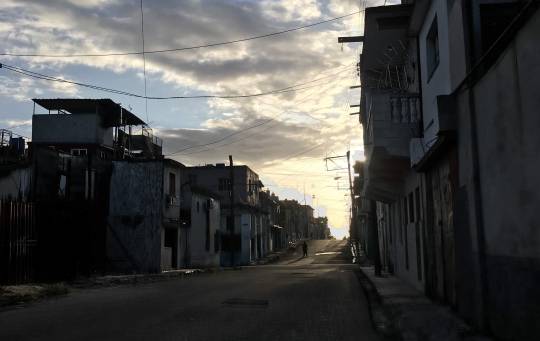
Hay experiencias que marcan nuestra vida. La cuarentena me tiene reflexiva y apreciando más las pequeñas cosas. Hace exactamente dos meses atrás, viajé a Cuba por primera vez. Todavía pienso en lo significativo que fue ese viaje para mi y aquí intentaré resumir por qué.
Después de vivir en Miami por varios años, el acento cubano no me era extraño. De hecho, cuando me regresé a Puerto Rico, el acento boricua era el que me parecía diferente pues pasé varios años acostumbrada a escuchar los “’ñooooo” y “asere, qué bolá” en todo momento.
Algo que siempre me alegraba en cualquier esquina en Miami es que solo al decir “buenos días” me preguntaban “¿boricua?”. Al contestar que sí, la respuesta más común era “Cuba y Puerto Rico, de un pájaro las dos alas”, haciendo referencia al poema de Lola Rodríguez de Tió. Y así, en un instante, ya fuera en la Iglesia, en el supermercado o en la cafetería mientras ordenaba una colada (wow, como la extraño), nos conectábamos y nos sentíamos en familia.
Al aprender de la realidad en Miami, es imposible no leer sobre el exilio cubano y su experiencia. Conocí muchas historias de primera mano que me retaron a aprender sobre una realidad a la cual los puertorriqueños nunca hemos estado expuestos. Aprendí sobre las ramificaciones de sus resentimientos y las complejidades de sus frustraciones, y muchas veces fui testigo de sus reclamos. Entonces, llegué a Cuba y aprendí que muchas perspectivas tienen experiencias paralelas, y otras son muy, pero que muy, distintas. Sin embargo, me sentí tan en casa como cuando estoy en mi querido Cupey en San Juan, Puerto Rico.
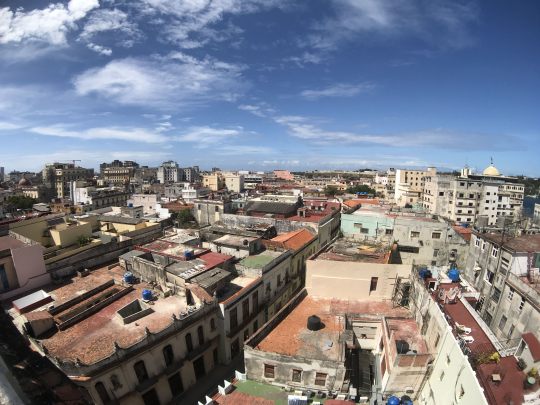
Durante una de mis reuniones, una pastora me identificó como puertorriqueña luego de solo decir “Buenas Noches”. Recuerdo que quien estaba a mi lado me dijo: “pero, ¿cómo supo?”. Yo pensé: “o tengo un acento mega marcado, o es obvio”. No sé, pero me transportó a las cafeterías en Miami donde lo mismo ocurría.
Antes del viaje nos enviaron lecturas con información de historia y contexto sobre Cuba y los temas que hablaríamos durante nuestro tiempo allá. En Cuba, visitamos diferentes Iglesias y conocimos sobre proyectos y necesidades que tienen en sus comunidades. Muchas de las cosas son muy parecidas a dinámicas que veo en Puerto Rico, otras me parecían completamente noveles. Aprendí mucho. Posiblemente, aprendí más de lo que pude aportar.
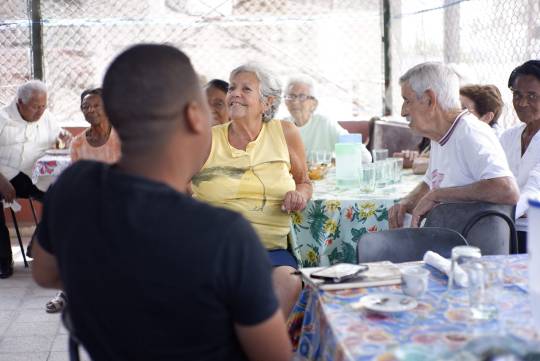
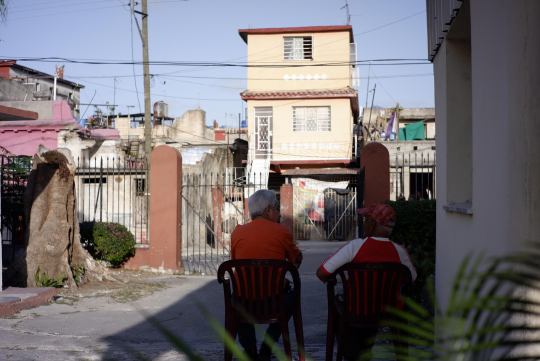
Los últimos dos días los pasé de turista, compartiendo con quienes muy amablemente me carretearon por toda La Habana. Aunque llevaba solo 6 días allá, sentía que llevaba mucho más. El cariño y cuidado que recibí fue el mismo que le damos a nuestras visitas cuando vienen acá. A mí se me olvidaba que estaba en otro país, y que estaba con personas que acababa de conocer. Así de bien lo pasé. Y es que, pienso yo, hay demasiadas cosas que unen a Cuba y Puerto Rico. Desde realidades sociales hasta el amor por la música, desde la historia hasta el diseño de nuestras banderas, desde el amor patrio, hasta las bebidas refrescantes. Las ganas de bailar y de comer bien fueron abastecidas al 100 por ciento. Y la gente, la gente de Cuba es lo más lindo que se puede encontrar.
A mi me tocó ir a Cuba luego de varias transiciones y retos en mi vida. Emocionalmente no había estado en mi mejor lugar, y fueron más las frustraciones que los logros en los pasados años. Pero, recientemente compartí que ese viaje había sido un amanecer para mi. Reconecté con algunos aspectos de mi vida que tenía en el limbo, y me reí como hacía mucho no lo hacía. Y es que me sentía en casa, algo que me habían dicho antes de ir pero no lo asimilé hasta que llegué.
El tiempo en Cuba fue un respiro, pero también fue un tiempo de organizar muchos de mis pensamientos. Fue tiempo de reconectar con proyectos que había abandonado, y tiempo de soñar con cosas nuevas. Cuba me devolvió la esperanza y las ganas de hacer y ser. En Cuba tuve conversaciones que me hicieron crecer, abordamos temas relevantes e importantes para mi (especialmente cuando trabajo en la Iglesia pero no tengo ningún titulo “oficial”). Vamos, que esta cuarentena me he sentido más productiva que nunca gracias a esa inspiración.
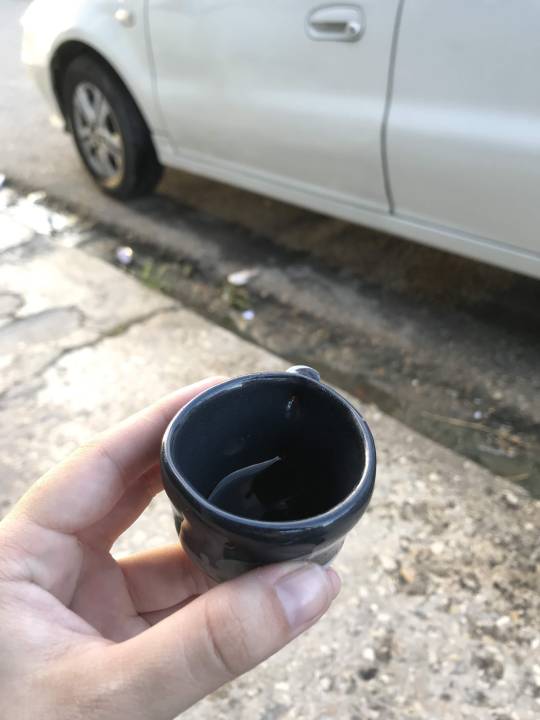
Mi última mañana en Luyanó, pregunté dónde podía tomarme un café y me llevaron a una casa. Allí, en el balcón, junto a Silvia -quien preparó el café- y Oscar -quien lavaba su carro frente a la casa de Silvia-, me tomé mi último cafecito mientras hablábamos de Puerto Rico. Oscar había visitado la Isla y empezó a contarle a Silvia sobre la Bomba y la Plena. Los acababa de conocer y no estuve mucho tiempo con ellos, pero fue de las experiencias más bonitas.
No fue hasta después que regresé a Puerto Rico que realmente entendí los versos de Lola, especialmente los siguientes:
“Yo no me siento extranjera: bajo este cielo cubano cada ser es un hermano que en mi corazon impera. Si el cariño por do quiera voy encontrando a mi paso, ¿Puedo imaginar acaso que el sol no me dé en ofrenda, un rayo de luz que encienda los celajes de mi ocaso?
Vuestros dioses tutelares han de ser también los míos! Vuestras palmas, vuestros ríos repetirán mis cantares… Culto rindo a estos hogares donde ni estorba ni aterra el duro brazo que cierra del hombre los horizontes… Yo cantaré en estos montes como cantaba en mi tierra!
Cuba y Puerto Rico son de un pájaro las dos alas, reciben flores o balas sobre el mismo corazón…
¡Que mucho si en la ilusión que mil tintes arrebola, sueña la musa de Lola con ferviente fantasía, de esta tierra y de la mía hacer una patria sola!”
Mientras tanto, mientras escucho la música que me regalaron antes de regresar, acá estoy contando los días para volver.

2 notes
·
View notes
Text
Lola Rodríguez de Tió

Poet and activist Lola Rodríguez de Tió was born on September 14, 1843 in San Germán, Puerto Rico. Rodríguez de Tío’s support of Puerto Rican independence brought her into conflict with Spanish authorities, and she was exiled from her homeland three times. Her writing gained her a reputation throughout Latin America. Mis cantares, her first book of poetry, was published in 1876 and sold 2,500 copies. She would continue both her writing and her revolutionary activity for many years. When her political work and Mi libro de Cuba caused her to be exiled for the third and final time, she went to New York and later to Cuba, where she helped found the Cuban Academy of Arts and Letters in 1910.
Lola Rodríguez de Tió died in 1924.
19 notes
·
View notes
Video
instagram
Fragmento de la Borinqueña letra revolucionaria (original) de Lola Rodríguez De Tió (en Plaza Las Delicias) https://www.instagram.com/p/B0RqYEBl4WN/?igshid=1fm2ky77e9u19
0 notes
Text
The day I stood still (El día en que permanecí inmóvil)
The day I stood still (El día en que permanecí inmóvil)
(Escrito originalmente el 21 de julio de 2012).
Al momento en que cursaba el grado 11 en la secundaria Lola Rodríguez de Tió en Carolina, Puerto Rico, no me había enfrentado a ese dilema llamado ‘amor.’ Se podría decir que mi vida hasta ese momento había sido una normal, aunque hoy estoy convencido que la ‘normalidad’ no existe ya que es una mera ilusión o construcción social (escoja usted). Mi…
View On WordPress
0 notes
Photo

Al ver esta foto que hoy, cuando llegamos a Quebradillas, mi hija Mariela tomó en el celular, recordé estos versos de Lola Rodríguez de Tió: "Borínquen, nido de flores donde comencé a soñar, al calor del dulce hogar que dio vida a mis amores, al recibir tus loores siento el alma en lo hondo algo que sale del fondo en acordes vibraciones y palpita en las canciones con que a tu afecto respondo......" (at Quebradillas)
0 notes
Video
youtube
Y’know, something that always bothered me, that always made me mad and made my blood boil, is seeing other country’s anthems. Those anthems that celebrate their victories, celebrate what they have achieved with their fights. That speak of the people and their spirits, that gives hope and determination. Those beautiful anthems that make their country’s inhabitants cry of the pride they get when they hear it. They make me mad because my own country, where I was born and raised, where I live, does not have one.
Like, perdóname pero “La Borinqueña” de ahora es una gran pila de mierda, y te voy a explicar por qué.
In 1868, Lola Rodríguez de Tió, a famous puertorrican poet and women’s rights defender, wrote a poem, called “La Borinqueña”. This poem was in support to the revolutionary movement going on. A spaniard, Felix Astol Artes, wrote the music to go along with it, as a danza habanera. This was our anthem, the one that was made to inspire Puertorricans to rise up! To be proud of who they were, and to break free from the reigns of any empire that dare enslave our island!
Oh, but the revolution failed. And Puerto Rico kept being part of the goddamned Spanish empire. As a mockery, the spaniards mutilated our anthem. They deemed it too revolutionary, that it could inspire Puertorricans to make another revolution and rise up against this piece of shit empire. So they took this anthem, the true Borinqueña, and murdered it. Manuel Fernández Juncos, a spaniard, rewrote it to be this sweet, submissive and docile romantic danza, that only speaks about how pretty our island was to Christopher Colombus when he came to rape our women and steal our gold. So, yeah, our anthem isn’t even Puertorrican. Its music and lyrics were made by our then-oppressors. When the obedient, empire-ass-kissing dog of Luis Muñoz Marín decided to make Puerto Rico a colony of the United States in 1952, he signed for that hymn, the submissive & docile one, to be our fucking anthem.
The true one is even fuckin’ prettier.
0 notes
Text
A Puerto Rico
Borinquen, nido de flores donde comencé a soñar, al calor del dulce hogar que dio vida a mis amores; al recibir tus loores siento del alma en lo hondo algo que sale del fondo en acordes vibraciones y palpita en las canciones con que a tu afecto respondo. Después de ausencia tan larga vengo a contemplar tu cielo, para calmar el anhelo que a veces mi vida amarga. Hoy mi espiritu se embarga de alborozo y alegría, al ver esta patria mía noble, grande, generosa, brindándome cariñosa su entusiasta simpatía. Aunque me alejó la suerte de tus valles y tus lomas, entre las blancas palomas del ensueño logro verte... Yo sabré siempre quererte, como llorar tus pesares, y en tus palmas y en tus mares ha de repetir el viento, que es tuyo mi pensamiento y son tuyos mis cantares. En otra tierra querida que alumbra el sol tropical y sueña el mismo ideal que en nuestros pechos se anida, hallé tan franca acogida entre fraternales brazos, que siento que en dos pedazos mi corazón se comparte ¡y es solo mi anhelo...atarte a cuba con dulces lazos! Cuba, tu hermana mayor, te señalará el camino, pues en un mismo destino las ha fundido el dolor; Cuba te ofrece su amor sin zozobra ni recelo... En defensa de tu duelo hará suya tu venganza, alentando la esperanza que resplandece en tu cielo. Feliz yo si logro un día la realidad de mi ensueño, enlazar con noble empeño aquella tierra y la mía! Yo las cantaré a porfía esalzando sus primores, y en la esencia de sus flores haré que mi canto suba, pues hoy Puerto Rico y Cuba son mis dos grandes amores. Como al ave viajadora que rauda tiene la pluma, pronto envolverá la bruma de la ausencia a tu cantora. Mas ¿qué importa? si te adora, será en vano que se ausente; en los claros de su mente y del sol a los reflejos, de cerca como de lejos, ¡tendrá tu imagen presente! "Al partir de tu ribera, iré triste y desolada pensando en la patria amada donde vi la luz primera". Mi nuevo nido me espera en otra hermosa región, ¡mas, al darte el corazón su tiempo adiós, Puerto Rico, mis dos patrias glorifico en una misma canción!
— Lola Rodríguez de Tió
#Lola Rodríguez de Tió#puerto rican#A Puerto Rico#writer#san german#inspired by the Grito de Lares#independence#La almojábana
2 notes
·
View notes
Photo

Arise, Puerto Rican! The call to arms has sounded! Awake from this dream, for it is time to fight!... The Cry of Lares must be repeated, and then we will know: victory or death.... We want to be free now, and our machete has been sharpened.... We no longer want despots, may the tyrant fall now; the unconquerable women also will know how to fight. We want liberty, and our machetes will give it to us... Come, Puerto Ricans, come now, for freedom awaits for us anxiously, freedom, freedom!
—Lola Rodríguez de Tió, 1868
#Lola Rodríguez de Tió#puerto rico#women#woc#latina#poetry#writer#grito de lares#uprising#colonialism#anti-imperialist#national liberation#spain#latin america#caribbean
21 notes
·
View notes





